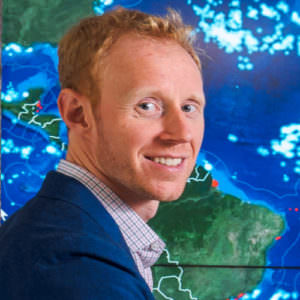Just a decade ago, building an accurate picture of the commercial fishing across the globe would have been impossible. Today, thanks to advances in satellite technology, cloud computing and machine learning, Global Fishing Watch is making it a reality. So how do we do it?
While only a small fraction of the world’s roughly 2.9 million fishing boats carry AIS, they are responsible for a disproportionate amount of the fish caught, especially far from shore. It’s estimated vessels with AIS account for over half the fishing effort more than 100 nautical miles from shore, and as much as 80% of the fishing in the high seas.
Global Fishing Watch runs this data through two neural networks using computer algorithms to learn and look for patterns in large data sets. More than 60 million points of information per day from more than 300,000 vessels are fed through machine-learning classifiers to determine the type of ship (e.g., cargo, tug, sail, fishing), its size, what kind of fishing gear (e.g. longline, purse seine, trawl) it’s using, and where and when it’s fishing based on its movement patterns. To do this, our research partners and fishery experts have manually classified thousands of vessel tracks to “teach” our algorithms what fishing looks like.
By using cloud computing to spread the load over thousands of machines in parallel, we’re able to apply that learning to the entire dataset producing 37 billion points over five years.
You don’t need to be an expert to use the platform, any more than you need to know about complex algorithms to use a search engine: it’s aimed at members of the public and journalists as much as researchers, campaigners and governments.
Users can create heat maps to see patterns of commercial fishing activity, view tracks of individual vessels, and overlay information like the locations of marine protected areas or different countries’ exclusive economic zones (EEZ).
Most large fishing vessels are assigned a unique Maritime Mobile Service Identity (MMSI) number, but in practice some vessels use a number that is not assigned to them — either a false number (like 123456789) or the number of another vessel. This means that, throughout the ocean, multiple vessels are simultaneously broadcasting the same MMSI number making them indistinguishable from one another without closer inspection. Vessels can also manipulate their GPS location by tampering with the system (“spoofing”).
Our machine-learning algorithms automatically separate signals coming from multiple vessels using the same MMSI, and also detect when the broadcast location is inconsistent with the location of the satellite that received the signal. We can’t always determine the true identity of the spoofing vessel, but our algorithms can still detect the vessel’s behaviour and put it on a map.
The technology powering the Global Fishing Watch map may be impressive, but the really exciting stuff happens when people use it:
- Governments can identify and take action against boats that aren’t authorised to fish in their waters, or that are fishing illegally in protected areas
- Seafood suppliers and retailers can see where and how fish are caught and ensure they only source from boats that are operating legally and responsibly
- Researchers can study the impacts of fishing on ocean health, identify vulnerable areas, investigate how environmental changes influence where fish go, or evaluate the effectiveness of conservation and fisheries policies
- NGOs and journalists can identify and investigate suspicious vessels, and advocate for stronger protection for important ecosystems
- Fishers can show that they are operating legally and responsibly, giving them a market advantage by enabling them to sell their catch to customers who demand sustainable, traceable seafood
“Every time I show the live map to somebody, they tell me something I didn’t know. In five seconds it can tell stories that never could have been told before.”
Brian SullivanCo-founder of Global Fishing Watch and Senior Program Manager for Google Earth Outreach

沒有留言:
張貼留言